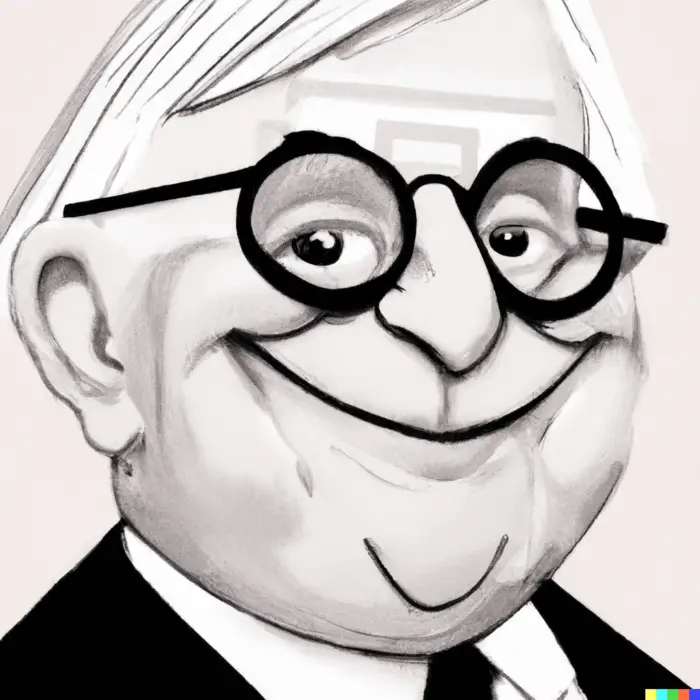I’m really curious to know what kind of investor are you? I’ve recently discovered I’m a Sponge Investor – also known as a perpetual/forever free agent seeking to soak up new information and expel old stuff like the ocean’s tide.
Enough about me. Back to you! What type of investor are you?

Different Types of Investors

Are you a keep it low cost indexer?
A 60/40 classic contributor?
Totally unconstrained in all ways?
A stocks for the long-run equities only allocator?
A mid-cap merchant?
A devout Boglehead investor?
A trend-following toastmaster?
Proud member of the Bogleheads?
A big time bitcoiner/altcoiner?
A real-assets sift-sorter?
Hey guys! Here is the part where I mention I’m a travel vlogger! This mid-cap review is entirely for entertainment purposes only. There could be considerable errors in the data I gathered. This is not financial advice. Do your own due diligence and research. Consult with a financial advisor.

These asset allocation ideas and model portfolios presented herein are purely for entertainment purposes only. This is NOT investment advice. These models are hypothetical and are intended to provide general information about potential ways to organize a portfolio based on theoretical scenarios and assumptions. They do not take into account the investment objectives, financial situation/goals, risk tolerance and/or specific needs of any particular individual.
Introducing The Sponge Investor

I’ve been pondering what kind of investor I am of late and I’ve come to the conclusion that I don’t fit neatly into any particular kind of box. And to be perfectly honest I quite like that.
If I had to give myself a label, and I’m not a big fan of labels to be quite frank, I’d called myself a Sponge Investor.
A sponge investor?
Yes, I’m the type of investor that soaks up as much information as possible and then expels it when it no longer serves my current level of awareness with regards to my overall investing philosophy and the type of portfolio I’m pursuing.
How about what isn’t expelled? What stays supersaturated in the sponge? What sticks like spaghetti on the wall?
These days what ‘sticks’ for me is diversification.
That’s currently what I feel affords me the best possible way to pursue a maximally diversified all-weather portfolio consisting of as many unique uncorrelated asset classes and strategies as possible in an expanded canvas format.

Contrarian Perpetual Free Agent

And what about the perpetual Free-Agent aspect you mentioned above?
That’s honestly the most important aspect of being a sponge investor. Not having a strong identity or affiliation to any one particular group, tribe or philosophy.
I’m trying my best not to get consumed by any amount orthodoxy, ideology, affiliation or association that will lead me down the path to rigidity and confirmation bias.
For me to keep my contrarian investing roots I need to be wild and free. I need to remain independent and not part of any team.

I Hope My Portfolio Changes Over Time

Here’s a bit of a bold statement.
I would be incredibly disappointed of my future self if my portfolio looked exactly the same as it is right now in say two, five or ten years down the road.
But wait?
Flip-flopping, mixing things up and not being patient is a surefire way to ensure lower returns long-term, isn’t it?
Yes, in many ways that is true.
Changing your strategy due to being impatient, selling low and chasing what is hot is not what I’m talking about.
My about page clearly states my investing goals of remaining PTSD in as steadfast of a manner as possible given my all-too personal biases.
Patience. Time. Strategy. Diversification/Discipline is the bedrock foundation of my self-prescribed investor psychology manifesto.
My idea of wanting to have a different portfolio in the future has nothing to do with succumbing to recency bias or loss aversion.
What I’m specifically seeking is enhancements.
Adding more uncorrelated assets.
Making my portfolio more robust, reliable and risk-parity resilient.
New ETFs and Mutual Funds are constantly being developed that offer either something new strategywise or an enhancement over current holdings.
I seek to find those funds and integrate them into my DIY quant portfolio.

Relentless Quest For Self-Improvement As An Investor
Being a Sponge Investor means soaking in these new opportunities and expelling out ones that are less than optimal.
It’s a quest for constant and never-ending improvement versus complacency and rigidity.
The dual process of soaking in and expelling out are equally important as a sponge investor.
I’ll now touch upon what I’ve expelled and what I’ve soaked in as replacements.

Market Cap Weighting and Low Costs Are King

The slavish pursuit of the lowest fee possible by index investors is indeed admirable.
I like paying less for things. Who doesn’t?
Where it becomes problematic for me is the concept of saving cents while potentially leaving dollars on the table.
When I took a deep dive into studying multi-factor equities vs their given parent index I noticed consistent 100+ basis point outperformance each and every time.
That includes US. EAFE. EM. Canada. Small-Cap.
Without fail the MSCI multi-factor index crushed its benchmark.
Thus, I’m not interested in turning pennies, nickels and dimes into sawdust by obsessively shaving down costs.
The end-goal here is to find great strategies with reasonable fees.
A more complex or sophisticated strategy vs market-cap weighted indexes is going to cost more.
I’m willing to pay more for it given its long-term potential to outperform, offer an uncorrelated strategy and/or improve overall diversification.
That is the bottom line to me.
Fees are clearly important but strategy is paramount.

Diversification Ends At 60/40

The 60/40 market-cap weighted stock combo handcuffed to aggregate bonds is the defacto portfolio of the peeps.
All risk concentrated on large-cap market beta equities and an index of bonds is what most investors choose as their ‘so called diversified’ battle weapon of choice.
But is this type of portfolio truly diversified?
Is it prepared for all economic regimes including slowing growth and stagflation?
In my opinion, it most certainly isn’t.
If the only free lunch you’re given as an investor is diversification does it not make sense to optimize equities by pursuing a myriad of factor strategies along with adding an alternative sleeve to your portfolio?
In all of my back-tests, of potential asset class combinations, the secret sauce of enhancing returns and improving stability was adding alternative investments.
And not just one.
A multi-strategy + multi-asset class approach to increasing diversification is when portfolios really become all-weather and all-seasons.
If 60/40 is where diversification ends for most investors, I suppose any of us pursuing alternatives is instantly contrarian.
And if that is the case I’m proudly contrarian.
Jeez, I feel as though I didn’t have to put in that much effort but I’ll gladly accept the label.

Simplicity is The End-Goal of Investing

One ought to only own 1, 2 or at maximum 3 funds.
Simplicity = Success
This is advice I’ve quickly expelled out of my sponge.
I quite honestly believe the opposite.
I feel as an investor, at least given my own biases towards wanting to be unconstrained, that my portfolio benefits greatly from additional funds/strategies as opposed to restrictions and/or trimming things down.
My dream is for the Picture Perfect Portfolio, the So Trendy Portfolio and the Nomadic Samuel Portfolio to be investable ETF tickers.
Would that be all that I own in my portfolio?
No way!
I’d still be interested in many MANY other funds that offer a different approach to asset allocation and diversification.
My goal is to build layer up layer, brick upon brick, a stack of funds that give me a maximally diversified portfolio.
I want to have as many alternative sleeve strategies as possible.
I want my equities to be strategically diversified by cap size and factors.
I’m not looking for a simple solution over here. I embrace complexity.

Leverage Leads To Total Ruin

There is a ruckus chorus of investors that get bent completely out of shape whenever the L word is uttered.
I’ve come up with a phrase for them: Leverage Hounds
These leverage hounds are a special breed. They’re been trained so well to react to the L word they bark on demand anytime it is uttered.
You say ‘leverage’ and it (the leverage hound) ‘barks’ without fail. Rumor even has it the Leverage Hound barks at other words beginning with L-E-V but nothing has been confirmed.
Let’s begin the test. I have a Leverage Hound at my side. And we begin!
Source: Peter the Basset Hound Barking (Such A Good boy!!!)
Me: Leverage. —> L Hound: Bark!!!
Me: Love Leverage. —> L Hound: Bark!!!
Me: Hate Leverage. —> L Hound: Bark!!!
Me: Not sure about Leverage. —> L Hound: Bark!!!
Me: Levitate (close enough). —> L Hound: Bark!!!
Wow! These Leverage Hounds truly are impressive!
Okay, so enough sarcasm for the day, the concept of leverage is often such a polarizing subject.
When I first started learning about it the message was clear. Leverage leads to total ruin.
However, what I’ve come to realize is that leverage is just a tool at the end of the day.
It can be used to start a nice toasty fire in the fireplace where you stretch out your feet and enjoy moments of comfort with family. Or you use leverage to start a fire that burns your entire house down.
The application of leverage is the key point.
Do you use it to purchase risky investments such as sequence of return risk toys that are 2X to 3X concentrated bets or do you spread the table out nicely to use leverage to create extra space for uniquely uncorrelated asset classes and strategies?
Spreading out as widely as possible is what I call an Enhanced Canvas Portfolio.
An Enhanced Canvas Portfolio, in its ideal form, is equal parts stocks, bonds and alternatives.
It doesn’t guess, play favourites or concentrate in any one area.
It is addition of new assets/strategies by expansion rather than subtraction.

Final Thoughts: Different Types Of Investors

Let’s finish things off by asking you, our dear reader, once again what kind of investor are you?
What things have you soaked in over the years to enhance your knowledge and overall portfolio strategy?
Conversely, what things have you expelled and now consider bad or inferior ideas to the ones you currently hold?
Please let me know in the comments below.
Important Information
Comprehensive Investment Disclaimer:
All content provided on this website (including but not limited to portfolio ideas, fund analyses, investment strategies, commentary on market conditions, and discussions regarding leverage) is strictly for educational, informational, and illustrative purposes only. The information does not constitute financial, investment, tax, accounting, or legal advice. Opinions, strategies, and ideas presented herein represent personal perspectives, are based on independent research and publicly available information, and do not necessarily reflect the views or official positions of any third-party organizations, institutions, or affiliates.
Investing in financial markets inherently carries substantial risks, including but not limited to market volatility, economic uncertainties, geopolitical developments, and liquidity risks. You must be fully aware that there is always the potential for partial or total loss of your principal investment. Additionally, the use of leverage or leveraged financial products significantly increases risk exposure by amplifying both potential gains and potential losses, and thus is not appropriate or advisable for all investors. Using leverage may result in losing more than your initial invested capital, incurring margin calls, experiencing substantial interest costs, or suffering severe financial distress.
Past performance indicators, including historical data, backtesting results, and hypothetical scenarios, should never be viewed as guarantees or reliable predictions of future performance. Any examples provided are purely hypothetical and intended only for illustration purposes. Performance benchmarks, such as market indexes mentioned on this site, are theoretical and are not directly investable. While diligent efforts are made to provide accurate and current information, “Picture Perfect Portfolios” does not warrant, represent, or guarantee the accuracy, completeness, or timeliness of any information provided. Errors, inaccuracies, or outdated information may exist.
Users of this website are strongly encouraged to independently verify all information, conduct comprehensive research and due diligence, and engage with qualified financial, investment, tax, or legal professionals before making any investment or financial decisions. The responsibility for making informed investment decisions rests entirely with the individual. “Picture Perfect Portfolios” explicitly disclaims all liability for any direct, indirect, incidental, special, consequential, or other losses or damages incurred, financial or otherwise, arising out of reliance upon, or use of, any content or information presented on this website.
By accessing, reading, and utilizing the content on this website, you expressly acknowledge, understand, accept, and agree to abide by these terms and conditions. Please consult the full and detailed disclaimer available elsewhere on this website for further clarification and additional important disclosures. Read the complete disclaimer here.
source: U.S. Global Investors, Inc. on YouTube





